Unlock the future of online education with custom web apps powered by WordPress and Laravel. These dynamic platforms empower educators to create tailored learning experiences, fostering engagement and innovation. Transform knowledge into impact—start your journey today!
Custom Web Apps with WordPress & Laravel: Transforming Online Education
Introduction: Transforming Online Education with Custom Web Apps Using WordPress and Laravel
In an era where digital learning has become the cornerstone of education, the demand for innovative and engaging online platforms is at an all-time high. Imagine a world where educators can seamlessly connect with students, share knowledge, and foster a vibrant learning community—all through a tailor-made digital experience. Enter the powerful duo of WordPress and Laravel: two dynamic frameworks that, when combined, unlock limitless possibilities for custom web applications specifically designed for the online education landscape.
This article explores how harnessing the strengths of WordPress’s user-friendly interface and Laravel’s robust backend capabilities can revolutionize the way we approach online learning. Whether you’re an educator seeking to enhance course delivery, a developer aiming to create bespoke solutions, or an institution striving to remain competitive in a crowded marketplace, the potential for transformation is immense. Join us as we delve into the transformative power of custom web apps, inspiring a new generation of learners and educators to thrive in the digital realm. Together, let’s redefine the future of education.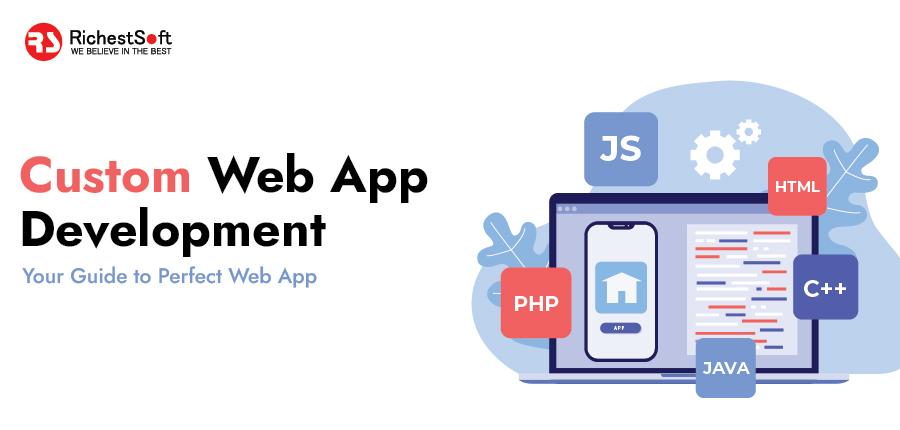
The Future of Online Education Empowered by Custom Web Apps
Revolutionizing Learning Experiences
The landscape of education is rapidly evolving, and the advent of custom web applications is leading this transformation. By using platforms like WordPress and Laravel, educators can create tailored solutions that cater to the diverse needs of students and institutions. This flexibility allows for a more personalized learning experience, enabling students to engage with content that resonates with their individual learning styles.
Enhanced Engagement through Interactivity
Custom web apps enable the integration of interactive elements that can significantly boost student engagement. Features such as:
- Gamified learning modules
- Real-time quizzes and polls
- Interactive discussion forums
These tools not only make learning more enjoyable but also foster a sense of community among learners, encouraging collaboration and peer-to-peer support.
Data-Driven Insights for Continuous Improvement
With the implementation of custom web applications, educators can harness the power of data analytics. By tracking student progress and engagement metrics, institutions can gain valuable insights into learning behaviors. This data can be visualized through reports, enabling educators to:
- Identify knowledge gaps
- Tailor interventions
- Enhance curriculum design
Such adaptability ensures that educational programs remain relevant and effective, constantly evolving to meet the needs of students.
Streamlined Administration with Automation
Custom web apps also facilitate administrative tasks through automation, reducing the burden on educators and administrative staff. Functions like:
- Automated grading systems
- Course enrollment management
- Student feedback collection
allow educators to focus more on teaching and less on paperwork, leading to improved educational outcomes.
Cost-Effective Solutions for Institutions
Investing in custom web applications can be a cost-effective strategy for educational institutions. By utilizing open-source platforms like WordPress and Laravel, schools can:
- Reduce development costs
- Minimize ongoing maintenance expenses
- Leverage existing resources
These aspects not only make it easier for institutions to implement robust online education solutions but also ensure sustainability in the long run.
A New Era of Accessibility
Custom web applications are breaking down barriers to education, making it more accessible to learners across various demographics. With features such as:
- Mobile-responsive design
- Multilingual support
- Adaptive learning pathways
these tools empower every student to access high-quality education, regardless of location or background.
Future-Proofing Education
As technology continues to advance, the need for innovative educational solutions will only grow. Custom web applications built on platforms like WordPress and Laravel not only address current educational challenges but also lay the groundwork for future advancements. By embracing these tools today, educators can ensure that they are well-equipped to meet the demands of tomorrow’s learners.

Harnessing WordPress for Dynamic Learning Experiences
In the rapidly evolving landscape of online education, leveraging the capabilities of WordPress can create dynamic learning experiences that engage students and foster growth. By integrating custom web applications built with Laravel, educators can personalize and enhance their curriculums, making learning not just informative but also interactive and enjoyable.
One of the standout features of using WordPress for education is its extensive plugin ecosystem. Plugins like LearnDash and LifterLMS provide robust frameworks that enable course creators to:
- Create interactive quizzes for instant feedback.
- Implement gamification elements to motivate learners.
- Track student progress with detailed analytics.
- Facilitate community-building through forums and discussion boards.
Integrating Laravel into this ecosystem can take the user experience to another level. Laravel’s powerful routing, security features, and ORM capabilities allow developers to craft tailored solutions that address specific educational needs. For instance, institutions can build:
- Custom Learning Management Systems (LMS) that cater to unique teaching methodologies.
- Real-time collaboration tools that encourage peer-to-peer learning.
- Data-driven dashboards for educators to monitor engagement and outcomes effectively.
The synergy between WordPress and Laravel also facilitates seamless integrations with third-party tools. This means educators can connect their platforms with:
- Payment gateways for hassle-free transactions.
- Email marketing services to keep students informed and engaged.
- Video conferencing tools that enhance remote learning experiences.
To visualize the impact of these tools on student engagement, consider the following table:
| Feature | Impact on Learning |
|---|---|
| Interactive Quizzes | Higher retention rates |
| Custom Dashboards | Increased motivation |
| Gamified Learning | Enhanced participation |
| Real-time Feedback | Immediate improvement |
By harnessing the combined strengths of WordPress and Laravel, educators can not only create content that is visually appealing and user-friendly but also profoundly impactful. The future of online education lies in the ability to adapt and innovate, and these technologies offer the perfect platform for transforming traditional learning into a vibrant, interactive experience that empowers students to thrive.
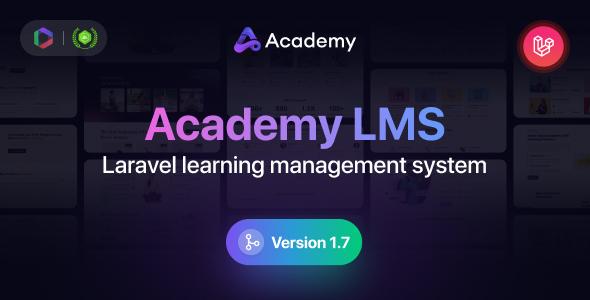
Unlocking Laravels Potential in Educational Platforms
Embracing the power of Laravel in educational platforms opens up a world of opportunities for developers and educators alike. With its elegant syntax and robust architecture, Laravel allows for the creation of custom web applications that can cater to the unique needs of online education. By harnessing this framework, institutions can build dynamic learning environments that foster engagement and enhance the educational experience.
One of the key advantages of using Laravel in educational platforms is its modular structure, which promotes the development of scalable applications. This modularity enables developers to implement features such as:
- Dynamic Content Management: Easily manage courses, resources, and user interactions with a flexible backend.
- Personalized Learning Paths: Create tailored educational experiences based on individual student needs and progress.
- Integrated Assessment Tools: Implement quizzes, assignments, and feedback mechanisms seamlessly.
- Robust User Management: Efficiently handle student and instructor profiles with customizable permissions and roles.
Moreover, Laravel’s built-in features such as authentication, routing, and session management simplify the development process, allowing educators to focus on what truly matters—their students. This not only accelerates the development timeline but also enhances the overall performance and security of the application. With tools like Laravel Forge and Envoyer, deployment and scaling become hassle-free, ensuring that platforms can handle increasing numbers of users without compromising on speed or reliability.
Integrating Laravel with WordPress also provides an exciting synergy for online education. While WordPress excels at content creation and management, Laravel can handle complex functionalities that WordPress plugins may struggle with. By combining the two, developers can create a powerful ecosystem where educational content is easily managed, while advanced features like real-time feedback and analytics are implemented flawlessly.
| Feature | Laravel | WordPress |
|---|---|---|
| Custom Development | Highly customizable | Plugin-based |
| User Management | Advanced control | Basic roles |
| Performance | Optimized for scale | Varies with plugins |
| Learning Analytics | Real-time insights | Limited |
As educational institutions strive to adapt to a rapidly changing landscape, leveraging Laravel’s capabilities can result in innovative solutions that not only meet today’s demands but also anticipate future needs. By investing in customized web applications that integrate the strengths of both Laravel and WordPress, educators can transform their online platforms into engaging and effective learning environments that empower students to thrive.

Creating User-Centric Designs for Enhanced Engagement
In the realm of online education, user engagement is paramount. Custom web applications crafted with tools like WordPress and Laravel can significantly enhance the learning experience by focusing on user-centric design principles. By prioritizing the needs and preferences of learners, educators can create environments that not only facilitate knowledge acquisition but also inspire participation and interaction.
To achieve this, designers should consider the following elements:
- Intuitive Navigation: A seamless navigation system allows users to easily find their desired content, reducing frustration and increasing time spent on the platform.
- Responsive Layouts: With learners accessing content from various devices, a responsive design ensures a consistent experience, whether on a desktop, tablet, or smartphone.
- Personalized Learning Paths: Customizable user profiles enable tailored experiences, allowing students to focus on specific areas of interest or skill level.
- Interactive Elements: Incorporating quizzes, polls, and discussion forums fosters a sense of community and keeps learners engaged.
Utilizing WordPress’s extensive library of plugins can enhance functionality without compromising on design. For instance, integrating learning management systems (LMS) with WordPress allows educators to offer courses, track progress, and evaluate performance all within a familiar interface. Meanwhile, Laravel’s robust framework provides the flexibility needed to build custom solutions that align perfectly with educational goals.
| User Engagement Features | Benefits |
|---|---|
| Gamification | Increases motivation through rewards and challenges. |
| Instant Feedback | Facilitates immediate learning adjustments and improvements. |
| Community Building | Encourages collaboration and peer support. |
| Analytics and Insights | Helps educators understand student behaviors and improve content accordingly. |
Ultimately, creating a user-centric design goes beyond aesthetics; it’s about fostering an environment that motivates learners to engage deeply with the material. By embedding these principles into custom web applications, educators can transform online education from a passive experience into an interactive journey that cultivates a love for learning.
The Power of Integration: Merging WordPress and Laravel
In today’s digital landscape, the demand for custom web applications is on the rise, particularly in the realm of online education. By harnessing the strengths of both WordPress and Laravel, developers can create powerful platforms that provide seamless user experiences and robust functionality. This fusion allows for the development of tailored solutions that meet the specific needs of educational institutions, instructors, and students alike.
One of the standout features of this integration is the ability to utilize WordPress’s intuitive content management system alongside Laravel’s sophisticated backend capabilities. This combination empowers educators to easily manage and publish content, while also leveraging Laravel’s routing, middleware, and security features to ensure a secure and efficient application. The result is a comprehensive platform that promotes effective learning and engagement.
Key benefits of merging these two technologies include:
- Enhanced User Experience: Users can navigate educational content effortlessly, thanks to WordPress’s user-friendly interface, complemented by Laravel’s dynamic features.
- Custom Functionality: Developers can create custom plugins and APIs that extend WordPress’s capabilities, allowing for specialized functionalities tailored to educational needs.
- Robust Security: Implementing Laravel’s built-in security features protects sensitive user data and ensures the integrity of the learning platform.
- Scalability: As educational demands grow, this integration allows easy scaling of applications to accommodate more users and advanced features.
To illustrate the potential of this integration, consider the following example of a custom online education platform:
| Feature | WordPress Role | Laravel Role |
|---|---|---|
| User Registration | Manage user profiles and authentication. | Handle secure user sessions and roles. |
| Content Delivery | Publish and manage educational content. | Serve dynamic content and resources. |
| Analytics and Reporting | Track user engagement through plugins. | Generate detailed reports on user behavior. |
| Payment Processing | Integrate e-commerce capabilities. | Manage transactions securely. |
By employing this integration, institutions can create a comprehensive online education experience that not only meets the current demands of learners but also anticipates future trends. The synergy between WordPress and Laravel allows for unparalleled flexibility, ensuring that educational platforms can evolve as rapidly as the field itself. This is the future of online education—where creativity meets technology to transform learning journeys.

Scalability and Performance: Building for Growth
In today’s dynamic digital landscape, the ability to scale a web application is paramount. Custom web apps built with WordPress and Laravel not only cater to current user demands but also anticipate future growth. As educational platforms evolve, they must be equipped to handle increased traffic and user engagement without compromising performance. Here’s how these frameworks can ensure your online education platform is built for success.
Leveraging the strengths of both WordPress and Laravel, developers can create robust solutions that provide excellent performance under pressure. Key strategies include:
- Efficient Database Management: Utilize Laravel’s Eloquent ORM to manage complex queries efficiently, ensuring quick access to course materials and user data.
- Optimized Caching: Implement caching strategies in WordPress to reduce load times, using plugins that seamlessly integrate with your custom application.
- Load Balancing: Distribute incoming traffic across multiple servers, maintaining a responsive experience as your user base grows.
- Content Delivery Networks (CDN): Deploy a CDN to deliver multimedia content quickly and reliably, enhancing the user experience across various geographical locations.
Performance is not just about speed; it’s also about reliability. By adopting a microservices architecture within Laravel, educational platforms can modularize their applications, allowing individual components to scale independently. This means that if one course becomes particularly popular, its corresponding services can be scaled without affecting the entire platform.
Moreover, integrating tools such as Google Analytics and performance monitoring software gives you insights into user behavior and system performance. This data is vital for making informed decisions about scaling your infrastructure, optimizing content delivery, and enhancing user interactions.
Consider the following table, which summarizes the advantages of using WordPress and Laravel for scalability:
| Feature | WordPress | Laravel |
|---|---|---|
| Ease of Use | High | Moderate |
| Performance | Good with caching | Excellent with optimization |
| Customization | High with plugins | Very High with code |
| Scalability | Moderate | High |
As you embark on the journey of building a custom web app for online education, keep scalability at the forefront of your strategy. The combined power of WordPress and Laravel creates a unique synergy that empowers educators and learners alike. With thoughtful design and robust infrastructure, your platform can not only thrive today but grow exponentially tomorrow.
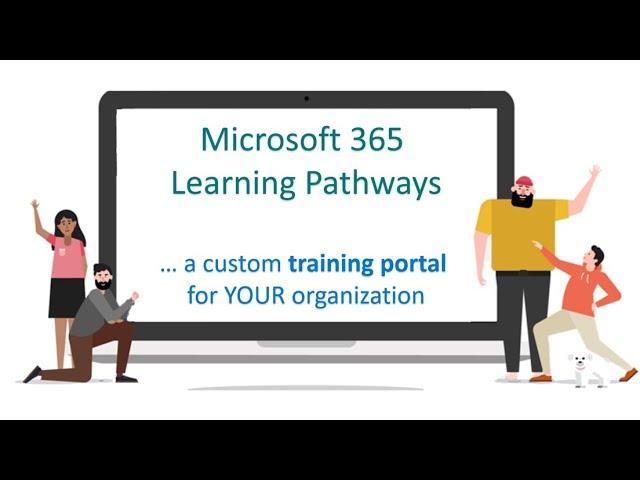
Tailoring Learning Pathways with Custom Features
In the realm of online education, one size does not fit all. Every learner has unique needs, goals, and preferences. This is where the power of custom features comes into play, enabling educators and institutions to craft tailored learning experiences that resonate with individual students. By leveraging the capabilities of WordPress and Laravel, developers can create dynamic web applications that enrich the educational journey.
Imagine a platform where each student can:
- Personalize their learning dashboard: Customizable interfaces allow users to prioritize resources, track progress, and set personal goals.
- Access tailored content: With adaptive learning algorithms, students receive materials suited to their specific learning styles and paces.
- Engage in interactive assessments: Quizzes and assignments can be designed to challenge students at their level while providing instant feedback.
Integrating features such as user profiles enables educators to monitor student engagement and performance closely. This data can be pivotal in identifying areas where students excel or struggle, allowing for timely intervention and support. Furthermore, implementing support forums and community features fosters collaboration, creating a vibrant learning environment where students can thrive together.
Another compelling aspect is the ability to incorporate multimedia elements into the learning pathways. A well-designed custom web app can seamlessly integrate:
- Video tutorials: Engaging video content that simplifies complex topics.
- Interactive simulations: Hands-on experiences that deepen understanding through practice.
- Infographics and visual aids: Resources that cater to visual learners and enhance retention.
Moreover, custom features can address various administrative needs. For instance, creating a centralized dashboard for instructors to manage courses, track attendance, and communicate with students can significantly enhance efficiency. A simple table might illustrate the benefits of such features:
| Feature | Benefit |
|---|---|
| Custom Learning Paths | Tailored content for diverse learners |
| Progress Tracking | Immediate feedback for continuous improvement |
| Community Engagement | Collaborative learning experiences |
| Resource Management | Streamlined course administration |
Ultimately, the flexibility offered by custom web applications built on platforms like WordPress and Laravel empowers both educators and students. By embracing this tailored approach, we can transform online education into a personalized journey that not only meets individual needs but also ignites a passion for learning. In a world where education is rapidly evolving, custom solutions are not just beneficial—they are essential.

Ensuring Accessibility and Inclusivity in Online Learning
In the digital age, accessibility and inclusivity are not just options; they are essential components of effective online learning environments. When we talk about creating custom web applications with WordPress and Laravel, we are delving into powerful tools that can help bridge the gap for learners of all abilities. The right design and development strategies can transform an online course from a simple learning tool to an inclusive educational experience.
To achieve a truly accessible online learning platform, consider implementing the following strategies:
- Responsive Design: Ensure that your web app is mobile-friendly and adapts seamlessly across various devices. A responsive design caters to users who rely on smartphones and tablets to access educational content.
- Keyboard Navigation: Not all users can use a mouse. Implementing full keyboard navigation allows those with mobility impairments to access the content easily.
- Text Alternatives: Provide alt text for images and visual content. This practice is crucial for visually impaired learners who rely on screen readers to consume content.
- Clear Visual Hierarchy: Utilize headers, lists, and concise paragraphs to create a logical flow. A well-structured layout aids comprehension and keeps learners engaged.
- Color Contrast: Ensure adequate contrast between text and background colors to improve readability for users with visual impairments.
Utilizing tools like WordPress plugins designed for accessibility can significantly enhance your platform. For example, plugins such as WP Accessibility and UserWay can automatically fix common accessibility issues, making it easier for educators to focus on content rather than coding intricacies.
Moreover, creating a community of practice around inclusivity can foster a culture of continuous improvement. Engage with learners through surveys and feedback forms to understand their unique challenges. This insight will guide enhancements and ensure that every student feels valued and supported.
| Accessibility Feature | Benefit |
|---|---|
| Screen Reader Compatibility | Helps visually impaired learners access content |
| Transcripts for Audio/Video | Supports deaf or hard-of-hearing learners |
| Customizable Font Sizes | Aids users with visual impairments |
Choosing to prioritize accessibility and inclusivity in your online learning platform is not only a legal obligation in many jurisdictions but a moral imperative. By leveraging the capabilities of WordPress and Laravel, you can create a vibrant educational space where every learner, regardless of their background or ability, can thrive. Embracing these principles will not only enhance user satisfaction but will also expand your reach, inviting a diverse range of learners to your community.
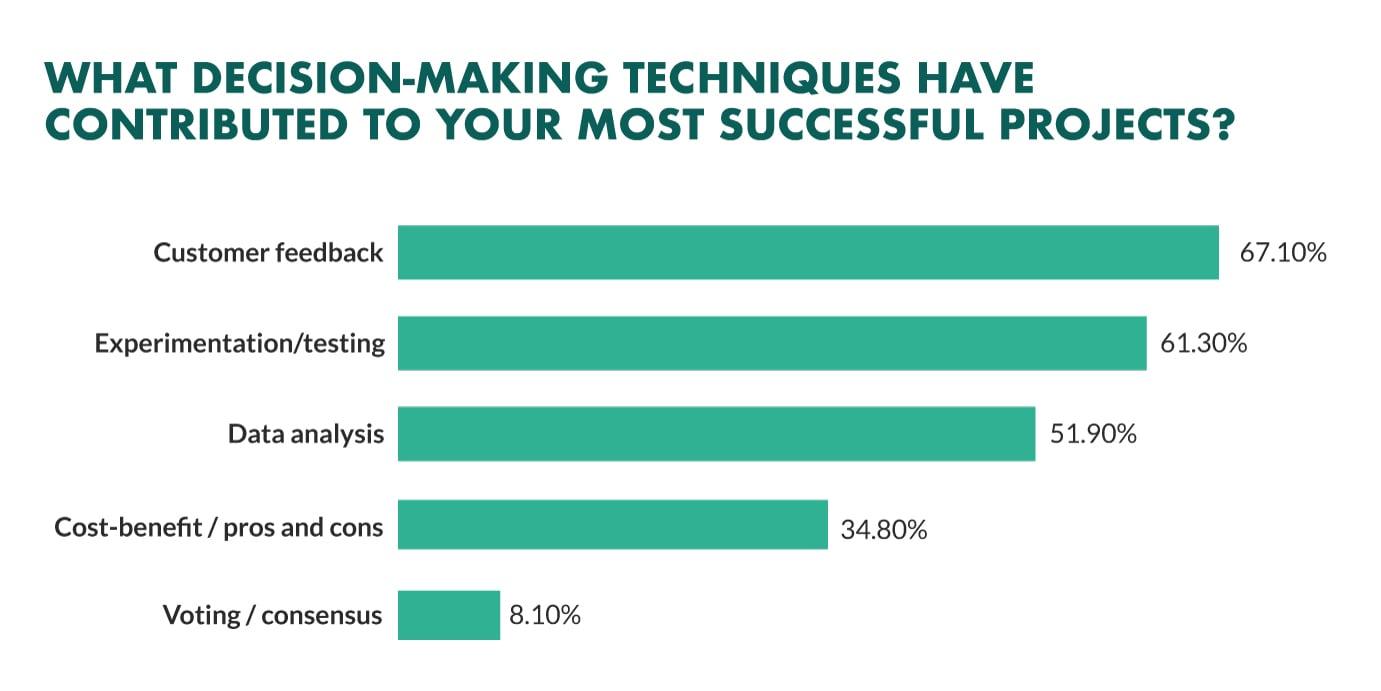
Data-Driven Decisions: Utilizing Analytics for Improvement
In the rapidly evolving realm of online education, leveraging data analytics has become essential for institutions aiming to enhance their offerings and meet student needs. By analyzing user behavior, engagement metrics, and performance outcomes, educators can make informed choices that lead to significant improvements. This data-driven approach is not just about collecting information; it’s about transforming that data into actionable insights that foster a dynamic learning environment.
To harness the full potential of analytics, consider implementing the following strategies:
- Tracking User Engagement: Utilize tools like Google Analytics to monitor how students interact with your platform. Understanding which courses are most popular can guide content development.
- Performance Metrics Analysis: Regularly assess test scores, assignment submissions, and course completion rates. This data can illuminate areas where students struggle, allowing for curriculum adjustments.
- Feedback Loops: Encourage students to provide feedback through surveys. Analyzing this data enables you to make responsive changes that align with learners’ expectations.
Moreover, creating custom web applications with WordPress and Laravel can significantly enhance the analytics capability of your educational platform. By leveraging Laravel’s powerful backend and WordPress’s user-friendly interface, you can build solutions tailored to your institution’s specific needs. This synergy allows for seamless data collection and analysis, ultimately leading to greater educational outcomes.
Consider the following benefits of using custom web apps in your educational initiatives:
| Feature | Benefit |
|---|---|
| Real-Time Data Processing | Quick decision-making based on current trends. |
| User-Centric Design | Enhanced learning experience tailored to student needs. |
| Scalability | Easy to accommodate growing student populations. |
| Integrated Reporting Tools | Comprehensive insights on student performance. |
By integrating these data-driven methodologies, educational institutions can not only improve operational efficiency but also foster a culture of continuous improvement. As we harness the power of analytics, we empower ourselves to create environments where every learner can thrive. The commitment to informed decision-making translates into courses that resonate with students, ultimately driving engagement and success.

Security First: Protecting Student Information Online
In today’s digital age, online education platforms have become invaluable resources for students and educators alike. However, with this convenience comes the critical responsibility of safeguarding personal information. Ensuring the security of student data is not just a compliance measure; it fosters trust and creates a safe learning environment. By adopting rigorous security practices, educational institutions can protect sensitive information and enhance the overall learning experience.
Implementing robust security protocols is essential for any custom web application built with WordPress or Laravel. This includes:
- Data Encryption: Utilize SSL certificates to encrypt data during transmission, ensuring that sensitive information remains confidential.
- Regular Software Updates: Keep the platform and plugins updated to patch any vulnerabilities that could be exploited by malicious actors.
- Access Controls: Implement role-based access to restrict sensitive data access only to authorized personnel.
- Backup Solutions: Regularly back up data to prevent loss in case of a security breach.
Moreover, fostering a culture of security awareness among students and staff is equally vital. Conducting training sessions on best security practices can empower users to recognize phishing attempts and other cybersecurity threats. For instance:
- Phishing Awareness: Teach students how to identify suspicious emails and links.
- Password Management: Encourage the use of strong passwords and password management tools.
- Two-Factor Authentication: Advocate for additional layers of security to protect accounts from unauthorized access.
Another important aspect of online security is the implementation of privacy policies that are clear and transparent. By communicating how student data is collected, used, and protected, educational institutions can build trust and reassure students that their information is in safe hands. Consider establishing a simple table to summarize your privacy practices:
| Data Type | Purpose | Protection Measures |
|---|---|---|
| Personal Information | User Identification | Encrypted Storage |
| Academic Records | Performance Tracking | Access Control Protocols |
| Payment Information | Transaction Processing | Secure Payment Gateways |
By prioritizing security, educational institutions not only protect their students but also enhance their reputation and reliability in the competitive online education landscape. As we continue to leverage technology to transform education, let us commit to making security a foundational pillar of our digital strategies—because a secure environment is a thriving environment.
Best Practices for Implementing Custom Web Apps
Creating a custom web application requires a blend of creativity, strategy, and technical prowess. To ensure your project is successful, consider the following best practices:
Define Clear Objectives
Before diving into the development process, it’s vital to outline clear and measurable objectives. These should align with the broader goals of your online education platform. Ask yourself:
- What problems do you want to solve?
- Who is your target audience?
- What features will enhance user experience?
Choose the Right Technology Stack
The selection of the right technology is crucial for the performance and scalability of your web app. With WordPress and Laravel, you can:
- Leverage WordPress for content management and community building.
- Utilize Laravel for robust, secure backend services.
- Integrate both to create a seamless user experience.
Focus on User Experience (UX)
User experience should be at the forefront of your design and development efforts. A well-structured UX can significantly enhance engagement and retention rates. Essential elements to focus on include:
- Intuitive navigation that allows users to find resources easily.
- Responsive design that works seamlessly across devices.
- Fast loading times to keep users engaged.
Implement Agile Development
Using an agile methodology allows for flexibility during the development process. Break your project into manageable stages, which can be adjusted based on feedback and testing results. This iterative approach will foster innovation and improve the final product.
Regular Testing and Feedback
Continuous testing is essential to identify bugs and usability issues. Engage users in the testing phase to gather real-time feedback. Consider the following testing strategies:
- A/B testing for feature comparisons.
- User surveys to gather qualitative feedback.
- Analytics tracking to monitor user behavior.
Maintain Strong Security Practices
Security is paramount, especially in educational platforms that handle sensitive user data. Ensure you:
- Implement SSL certificates for encrypted connections.
- Regularly update your software to patch vulnerabilities.
- Use proper authentication protocols to safeguard user accounts.
| Best Practice | Description |
|---|---|
| Clear Objectives | Define what success looks like for your custom web app. |
| Technology Stack | Select tools that align with your project goals. |
| User Experience | Design with the user journey in mind. |
| Agile Development | Be adaptable to changes during the project lifecycle. |
| Security | Protect user data and maintain trust. |
By incorporating these best practices into your strategy, you not only enhance the functionality and appeal of your custom web app but also create a transformative learning experience that can elevate your online education platform to new heights.

Success Stories: Transformative Case Studies in Online Education
Future Trends: What’s Next for Custom Educational Solutions
The landscape of online education is rapidly evolving, with custom educational solutions at the forefront of this transformation. As we look ahead, several key trends are likely to shape the future of this sector, particularly through the innovative use of technologies like WordPress and Laravel.
Personalized Learning Experiences
One of the most significant trends on the horizon is the shift towards personalized learning experiences. By leveraging the flexibility of custom web applications, educators can create tailored curricula that adapt to individual student needs. This means:
- Adaptive learning paths that respond to student progress.
- Customized assessment methods to better gauge understanding.
- Analytics-driven insights to inform teaching strategies.
Integration of Artificial Intelligence
Artificial Intelligence (AI) will play a crucial role in enhancing educational solutions. With the integration of AI tools, custom web apps can offer:
- Chatbots for instant student support.
- Automated grading systems to save educators time.
- Predictive analytics to identify at-risk students early on.
Enhanced Collaboration Tools
In an increasingly globalized world, the need for effective collaboration tools will only grow. Custom solutions built on platforms like WordPress and Laravel can facilitate seamless interaction among students, educators, and industry professionals. Features could include:
- Real-time project management tools.
- Virtual classrooms with integrated discussion forums.
- Peer-review systems to foster constructive feedback.
Mobile-First Approaches
As mobile usage continues to surge, custom educational platforms must adopt a mobile-first approach. This trend will ensure that learning is accessible anytime, anywhere, making use of:
- Responsive designs for optimal viewing on all devices.
- Offline capabilities for users in low-connectivity areas.
- Push notifications to keep learners engaged and informed.
Focus on Gamification
Gamification is set to become a staple in custom educational solutions. By incorporating game-like elements, educators can boost engagement and motivation. Key components may include:
- Quests and challenges to make learning interactive.
- Leaderboards to foster healthy competition.
- Achievements and rewards for reaching milestones.
As we move forward, the fusion of technology and education will continue to create a dynamic and engaging learning environment. The potential for growth in custom web applications tailored to meet the unique needs of students and educators is vast, and those who embrace these trends will undoubtedly lead the charge in transforming online education.
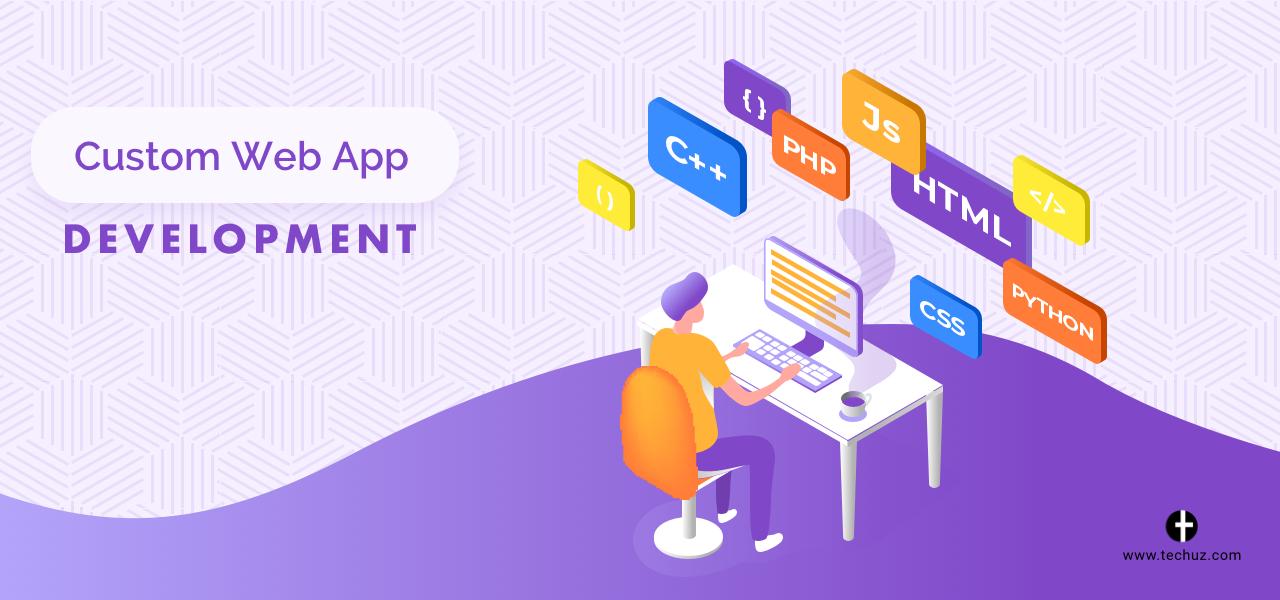
Your Journey Begins: Steps to Launch Your Custom Web App
Embarking on the journey to create a custom web application tailored for online education is both thrilling and transformative. With the right tools and strategies, you can build a platform that not only meets the needs of educators and learners but also stands out in a crowded market. Here are key steps to set you on the path to launching your innovative web app.
- Define Your Vision: Start by outlining what you want your web app to achieve. Are you focusing on interactive courses, real-time assessments, or community engagement? Clearly defining your vision will guide your development process.
- Research Your Audience: Understanding your target users is crucial. Conduct surveys or interviews to gather insights about their needs, preferences, and pain points. This information will shape the features and design of your app.
- Choose the Right Technology: For a robust online education platform, consider using a combination of WordPress for content management and Laravel for backend functionality. This powerful duo allows for scalability and flexibility as your audience grows.
Once you’ve laid down the groundwork, it’s time to move into the design phase. Keep in mind that user experience (UX) is paramount. A clean, intuitive interface will keep users engaged and encourage them to return. Ensure that your design is:
- Responsive: Your web app should function seamlessly on desktops, tablets, and smartphones.
- Accessible: Incorporate features that support users with disabilities, ensuring a wider reach.
- Visually Appealing: Use colors and graphics that resonate with your audience while maintaining a professional look.
| Feature | Description |
|---|---|
| Interactive Quizzes | Engage learners with quizzes that provide instant feedback. |
| Live Webinars | Host live sessions to facilitate real-time interaction between instructors and students. |
| Progress Tracking | Allow users to track their learning journey and milestones. |
| Community Forums | Enable discussion and collaboration among users to foster a sense of community. |
After developing your application, rigorous testing is essential. Gather a group of beta testers to use the app and provide feedback. Focus on identifying bugs, improving user experience, and ensuring all features function as intended. This phase is pivotal in refining your product before the official launch.
Once you’re ready for launch, create a marketing strategy that highlights the unique aspects of your web app. Utilize social media, educational blogs, and partnerships with educational institutions to spread the word. Consider offering introductory discounts or free trials to entice users to try your platform. Your goal is to build a strong community around your app, ensuring sustained growth and engagement.
Frequently Asked Questions (FAQ)
Q&A: Custom Web Apps with WordPress & Laravel: Transforming Online Education
Q1: Why should educators consider using custom web apps for online learning?
A1: In today’s digital landscape, the demand for personalized and interactive online education is at an all-time high. Custom web apps built with platforms like WordPress and Laravel empower educators to create tailored learning experiences that meet the unique needs of their students. These platforms offer flexibility and scalability, allowing you to design a user-friendly interface and integrate features that enhance engagement and learning outcomes. By embracing custom solutions, educators can transform traditional teaching methods and inspire a new generation of learners.
Q2: What advantages do WordPress and Laravel offer for creating online education platforms?
A2: Both WordPress and Laravel bring distinct advantages to the table. WordPress is renowned for its ease of use, extensive plugin ecosystem, and vibrant community, making it ideal for those who may not have extensive coding experience. On the other hand, Laravel is a powerful PHP framework that excels in building robust, high-performance applications. It offers sophisticated features like routing, authentication, and database management, allowing developers to create complex web applications efficiently. By leveraging the strengths of both platforms, educators can craft comprehensive online learning environments that are both beautiful and functional.
Q3: Can you provide examples of features that a custom web app for online education might include?
A3: Absolutely! A custom web app for online education can encompass a wide range of features designed to enhance the learning experience. Some examples include:
- Interactive Course Material: Engaging multimedia content such as videos, quizzes, and interactive simulations.
- Progress Tracking and Analytics: Tools that help both educators and students monitor progress and performance.
- Community Forums: Spaces for students to interact, ask questions, and collaborate on projects.
- Personalized Learning Paths: Customizable modules that adapt to individual learning styles and paces.
- Online Assessments and Certifications: Seamless integration of quizzes and certificates upon course completion.
- Mobile Responsiveness: Ensuring that learning can happen anytime, anywhere, on any device.
These features can significantly enhance user engagement and create a more enjoyable learning experience.
Q4: How does investing in custom web apps lead to better student outcomes?
A4: Investing in custom web apps leads to better student outcomes by fostering an environment that prioritizes engagement and interactivity. With tailored features and resources, students can learn at their own pace and in a way that resonates with their individual learning styles. The ability to provide immediate feedback through assessments and analytics allows educators to intervene when necessary and support their students effectively. Ultimately, this personalized approach cultivates a deeper understanding of the material, which translates into higher retention rates and overall success.
Q5: What are the first steps for educators looking to develop a custom web app for their courses?
A5: Educators eager to develop a custom web app for their courses should start by defining their goals and the specific needs of their students. Conducting surveys or focus groups can provide valuable insights. Next, collaborating with a skilled developer or development team experienced in WordPress and Laravel is crucial. They can help translate your vision into a functional app while ensuring best practices in design and user experience are followed. plan for ongoing assessment and iteration; gathering user feedback after launch will help refine and enhance the app over time.
Q6: In what ways can custom web apps foster a sense of community among students?
A6: Custom web apps can be designed to incorporate social features that foster a sense of community among students. Features like discussion boards, group projects, and peer review systems encourage interaction and collaboration. By integrating social media-like functionalities, such as user profiles, messaging systems, and activity feeds, students can connect on a more personal level. This sense of belonging not only enhances the learning experience but also motivates students to stay engaged and committed to their educational journey.
Q7: How can educators measure the effectiveness of their custom web apps in improving learning experiences?
A7: Measuring the effectiveness of custom web apps can be achieved through a combination of quantitative and qualitative metrics. Educators can analyze user engagement statistics, such as course completion rates, time spent on the platform, and assessment scores. Additionally, gathering qualitative feedback through surveys and interviews can provide insights into user satisfaction and areas for improvement. By continuously monitoring these metrics, educators can make data-driven decisions to enhance their platforms and better serve their students.
Final Thought:
By embracing custom web apps built on WordPress and Laravel, educators can ignite a revolution in online education. These tools are not just about technology; they are about creating transformative learning experiences that empower students and inspire educators. The future of education is bright, and it starts with a commitment to innovation and customization. Let’s shape the future together!
Future Outlook
As we stand at the crossroads of technology and education, the potential for custom web applications powered by WordPress and Laravel is nothing short of revolutionary. The ability to create tailored, engaging, and interactive learning experiences not only enhances the educational landscape but also empowers educators and learners alike to reach new heights.
Imagine a world where barriers to access are dismantled, where every student can thrive in a personalized learning environment designed to cater to their unique needs and aspirations. With the combination of WordPress’s user-friendly interface and the robust capabilities of Laravel, the dream of bespoke educational platforms is within reach, allowing institutions to innovate and adapt in a rapidly changing digital era.
Now is the time to embrace this incredible opportunity. Whether you’re an educator looking to enrich your curriculum, an institution aiming to expand its reach, or a developer eager to craft transformative solutions, the tools and technologies are at your fingertips. Together, let us harness the power of custom web apps to not only elevate online education but to inspire a generation of learners ready to take on the world.
Join us in this exciting journey towards a brighter, more inclusive future in education. The possibilities are endless, and the impact profound. Let’s transform online education together—one custom web app at a time.





